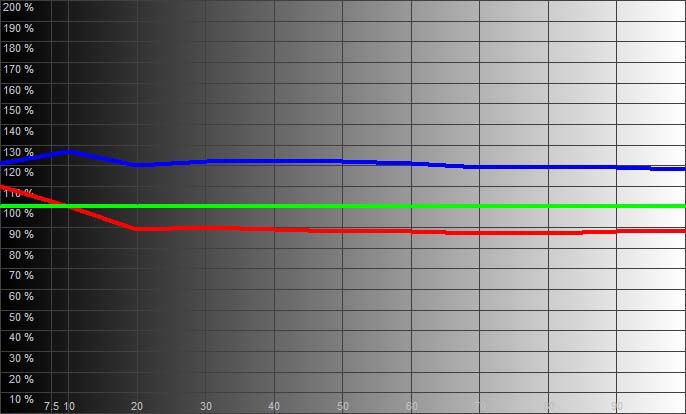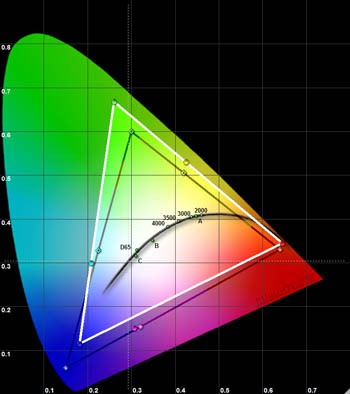Introduction
As many people know, Pioneer purchased
NEC's plasma manufacturing facilities last year, resulting in an interesting
fusion in technology between the two companies.
A while back,
Pioneer had two lines of plasmas, Elite units for high end prosumer use, and
the regular PDPs that were purchasable for a lower cost and could be
installed by the owner himself. In the last couple of years, Pioneer had
moved towards unifying the two product ranges, resulting the 435 and 436
line, which physically looked like the Elite units (black piano URUSHI finish) and were functionally a consumer unit.
The PDP-42MXE10 is a deviation from this roadmap,
which is clearly intended for custom installers and prosumers. The unit is
physically very conservative in appearance. Internally, however, this is a very interesting product that may appeal
to many prosumers and installers who read Secrets on a regular basis.
One of the many highlights of CES 2006
for me was Pioneer's FHD1, arguably the best plasma on the show floor (but
undoubtedly, one of the only two full HD 50" plasmas that were displayed at the
show). Its feature list was the first time that a plasma
officially announced proper support for 50 Hz, 60 Hz, 48 Hz, 72 Hz, and 75 Hz. For
those of you who don't know this, plasmas usually pick a display rate
and just stick with it to avoid the heavy calculations necessary to ensure
that gamma levels, calibration, and the number of colors are retained at each
of the different vertical refresh rates. The most popular vertical refresh
rate is, of course, 59.94 Hz, which works quite nicely for the US, but
presents quite a conundrum for us European users. In addition, the recent
introduction of 24fps content (1080sf24 and the like) makes us prosumers
look more carefully at iteration of 24 Hz in our displays. That means that
48 Hz, 72 Hz (and their European counterparts, 50 Hz and 75 Hz) are looking very
appealing right about now. Pioneer recognized this and added this feature to
the FHD1.
The remote control is adequate at
best, having no discrete on-off buttons, and is not built very well.
 It's a far cry from high end remotes that Pioneer certainly knows
how to make. I suspect that, like many remotes these days, it's a
token unit to be used to teach a universal or programmable remote
and not be a primary control for the TV.
It's a far cry from high end remotes that Pioneer certainly knows
how to make. I suspect that, like many remotes these days, it's a
token unit to be used to teach a universal or programmable remote
and not be a primary control for the TV.
The
42MXE10 does not "officially" support these. Unofficially, using the service
menu (available to custom installers through hard pressing DISPLAY and then
pressing the MENU button) offers the ability to remove the judder that
typically gets introduced in the FRC (Frame Rate Conversion) portion of most
plasmas for any rate other than 60/59.94 Hz. This allows the MXE10 to support
proper judderless 50 Hz, and is in fact the first plasma I have ever tested
capable of doing this with no visible banding at the display's native rate!
Bundling this plasma with an outboard video
processor or HTPC is a dramatic improvement for European users who were, up
until now, forced to compromise on either judder or banding.
The cost of this is a slight flicker which is
probably caused by the plasma shutting off for around 3ms for each vertical
refresh in order to avoid having to do those complex calculations that could
detract from either the picture quality or number of colors. This flicker,
which is familiar to 50 Hz users, is only apparent at very high frequencies
and disappears at around 6 feet viewing distance.
Out of the box, the display comes quite hot (RGB
histogram shown below),
with blue too high and red too low. This gives the display the
appearance of being brighter than it really is.

Pre
Calibration Histogram
After calibration, RGB is flat between 100 IRE
and 40 IRE, as shown below. The display gives one of the most stable D65
calibrations that I was able to do on a plasma without the assistance of an
outboard scaler. Below 40 IRE, the image will appear blueish.

Post
Calibration Histogram

Post
Calibration Grey-Scale
The CIE chart, shown
below, is quite good. If you look at the secondaries, they are
nearly ideal. As always, green is too saturated, and the display
lacks in blue (common problem for plasmas). Red is a surprise. It it
not saturated enough (although it's quite close). Plasma
manufacturers need to try harder to improve blues. (The dark
triangle is the ideal, and the white triangle is the 42MXE10
results. Resulting data points inside the dark triangle mean not
enough of that color, and data points outside the dark triangle mean
too much of that color.)

CIE Chart
Click Here to Go to Part II.